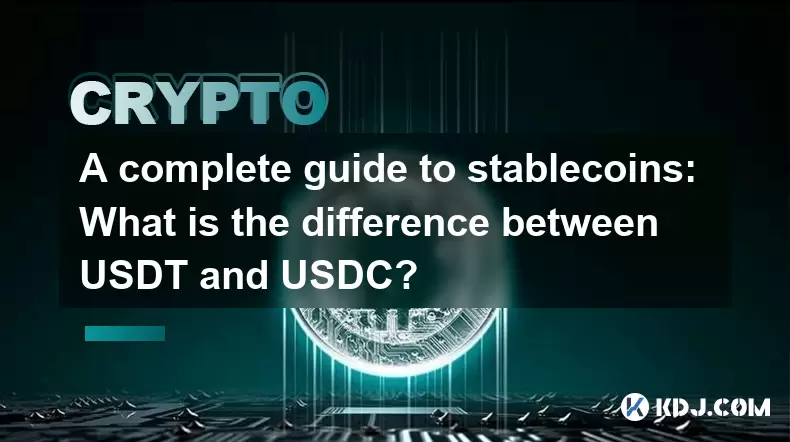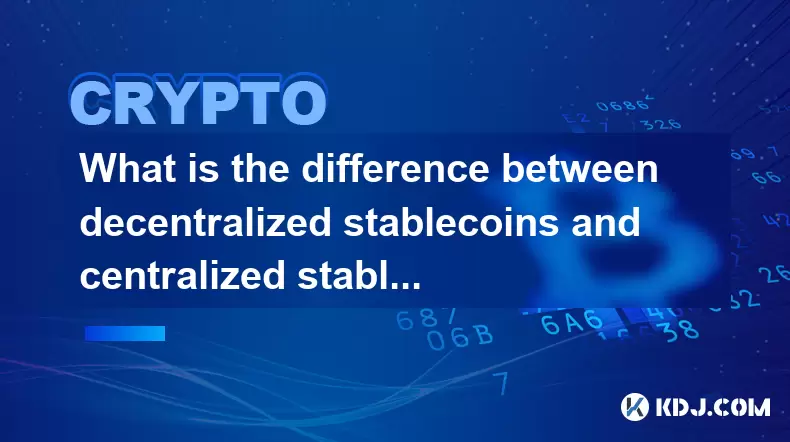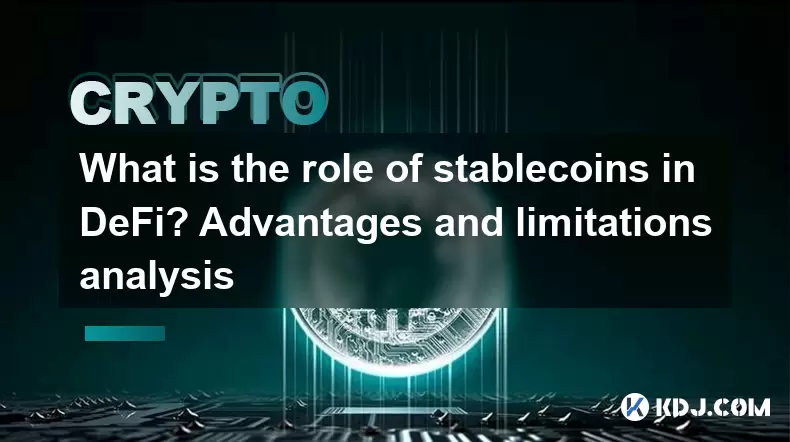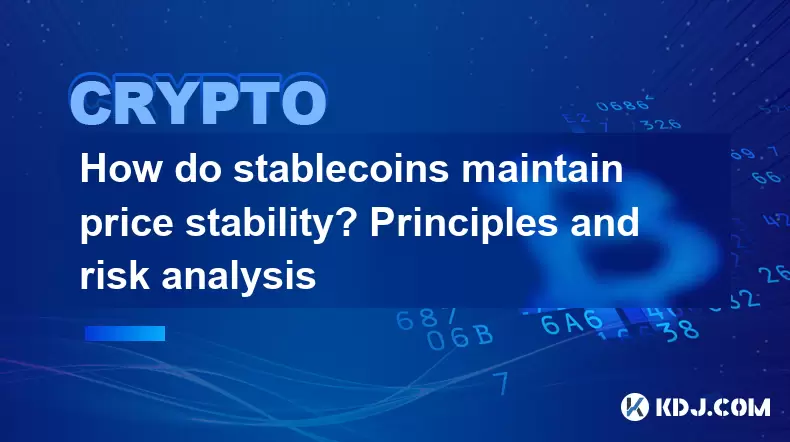-
 Bitcoin
Bitcoin $118000
0.67% -
 Ethereum
Ethereum $3750
0.71% -
 XRP
XRP $3.183
1.61% -
 Tether USDt
Tether USDt $1.000
-0.01% -
 BNB
BNB $788.1
1.21% -
 Solana
Solana $186.0
0.85% -
 USDC
USDC $0.9999
-0.02% -
 Dogecoin
Dogecoin $0.2373
1.25% -
 TRON
TRON $0.3204
1.76% -
 Cardano
Cardano $0.8266
1.85% -
 Hyperliquid
Hyperliquid $44.04
1.28% -
 Sui
Sui $4.192
5.88% -
 Stellar
Stellar $0.4399
2.63% -
 Chainlink
Chainlink $18.40
1.19% -
 Hedera
Hedera $0.2842
9.06% -
 Bitcoin Cash
Bitcoin Cash $560.5
2.46% -
 Avalanche
Avalanche $24.99
4.58% -
 Litecoin
Litecoin $114.5
1.25% -
 UNUS SED LEO
UNUS SED LEO $8.980
-0.03% -
 Shiba Inu
Shiba Inu $0.00001406
0.53% -
 Toncoin
Toncoin $3.306
4.27% -
 Ethena USDe
Ethena USDe $1.001
0.03% -
 Polkadot
Polkadot $4.169
2.37% -
 Uniswap
Uniswap $10.56
1.95% -
 Monero
Monero $322.8
1.06% -
 Dai
Dai $0.0000
0.00% -
 Bitget Token
Bitget Token $4.545
0.12% -
 Pepe
Pepe $0.00001261
1.29% -
 Aave
Aave $296.5
1.27% -
 Cronos
Cronos $0.1379
5.90%
A complete guide to stablecoins: What is the difference between USDT and USDC?
USDT and USDC, both pegged to the USD, differ in transparency, regulation, and market presence, impacting their use in trading and DeFi applications.
May 25, 2025 at 05:21 pm

Stablecoins have become a crucial part of the cryptocurrency ecosystem, providing a bridge between the volatility of digital assets and the stability of traditional fiat currencies. Among the most popular stablecoins are USDT (Tether) and USDC (USD Coin). While both are pegged to the US dollar and aim to offer stability, there are significant differences between them that users should be aware of before making a choice. This guide will explore these differences in detail, covering aspects such as issuance, transparency, regulation, and use cases.
What Are Stablecoins?
Stablecoins are a type of cryptocurrency designed to minimize the volatility typically associated with other digital assets like Bitcoin and Ethereum. They achieve this by pegging their value to a stable asset, often a fiat currency like the US dollar. This pegging mechanism helps users to store value, trade, and transact without worrying about the wild price swings common in the crypto market.
Understanding USDT (Tether)
USDT, commonly known as Tether, is one of the first and most widely used stablecoins. Launched in 2014 by Tether Limited, USDT aims to provide a stable digital currency that is always worth one US dollar. Here are some key features of USDT:
- Issuance: USDT is issued by Tether Limited, a company that claims to back each USDT token with an equivalent amount of US dollars held in reserve.
- Blockchain Compatibility: USDT is available on multiple blockchains, including Bitcoin (via Omni Layer), Ethereum (as an ERC-20 token), and others like Tron and Solana.
- Use Cases: USDT is widely used for trading on cryptocurrency exchanges, as a means of payment, and as a way to move funds between different blockchains.
Understanding USDC (USD Coin)
USDC, or USD Coin, was launched in 2018 by Circle and Coinbase, two well-known entities in the cryptocurrency space. Like USDT, USDC is pegged to the US dollar, but it has some distinct characteristics:
- Issuance: USDC is issued by the Centre Consortium, a partnership between Circle and Coinbase. Each USDC token is backed by a US dollar held in reserve.
- Blockchain Compatibility: USDC is primarily an ERC-20 token on the Ethereum blockchain, though it is also available on other blockchains like Algorand and Stellar.
- Use Cases: USDC is used for trading, as a payment method, and for DeFi (Decentralized Finance) applications, where it is often preferred due to its transparency and regulatory compliance.
Key Differences Between USDT and USDC
While both USDT and USDC serve the same fundamental purpose of providing a stable digital currency, there are several key differences that set them apart:
Transparency and Audits
- USDT: Tether has faced criticism for its lack of transparency regarding its reserves. Although Tether Limited claims to hold sufficient reserves to back all issued USDT, the company has been reluctant to provide regular, detailed audits. This has led to skepticism about the actual backing of USDT.
- USDC: In contrast, USDC prides itself on transparency. The Centre Consortium publishes monthly attestations of its reserves, conducted by independent auditors. This regular reporting helps to build trust among users and regulators.
Regulatory Compliance
- USDT: Tether has had a somewhat rocky relationship with regulators. In the past, it has been fined for misrepresenting its reserves and has been subject to various investigations. This has led to concerns about its long-term viability and compliance with regulatory standards.
- USDC: USDC, on the other hand, is designed with regulatory compliance in mind. Circle and Coinbase are both regulated entities, and USDC is subject to regular audits and oversight. This makes it a more attractive option for businesses and institutions that require a stablecoin that adheres to legal standards.
Market Presence and Adoption
- USDT: USDT has a significant market presence and is widely accepted across numerous cryptocurrency exchanges and trading platforms. Its early entry into the market has given it a strong foothold, making it the go-to stablecoin for many traders and investors.
- USDC: While USDC has gained significant traction, especially in the DeFi space, it still lags behind USDT in terms of overall market share. However, its focus on transparency and compliance has led to increased adoption among institutional investors and businesses looking for a more reliable stablecoin.
Use in DeFi and Smart Contracts
- USDT: USDT is used in various DeFi applications, but its lack of transparency has led some platforms to prefer other stablecoins. It is available on multiple blockchains, which can be advantageous for users looking to interact with different ecosystems.
- USDC: USDC is particularly popular in the DeFi space due to its transparency and regulatory compliance. Many DeFi protocols prefer USDC for its stability and the trust it engenders among users. Its availability on Ethereum and other smart contract platforms makes it a versatile choice for developers and users alike.
How to Acquire USDT and USDC
Acquiring USDT and USDC can be done through various cryptocurrency exchanges and platforms. Here is a detailed guide on how to obtain these stablecoins:
- Choosing an Exchange: Start by selecting a reputable cryptocurrency exchange that supports both USDT and USDC. Popular options include Binance, Coinbase, and Kraken.
- Creating an Account: Sign up for an account on the chosen exchange. You will need to provide personal information and complete a Know Your Customer (KYC) verification process.
- Depositing Funds: Deposit funds into your exchange account. This can be done via bank transfer, credit/debit card, or other supported payment methods.
- Trading for USDT or USDC: Navigate to the trading section of the exchange and select the trading pair that allows you to exchange your deposited funds for USDT or USDC. For example, if you deposited USD, you might trade USD/USDT or USD/USDC.
- Withdrawing to a Wallet: Once you have acquired USDT or USDC, you can withdraw them to a personal wallet for storage or use. Ensure you have the correct wallet address for the blockchain on which the stablecoin is based.
Risks and Considerations
While stablecoins like USDT and USDC offer a level of stability, they are not without risks. Here are some key considerations:
- Counterparty Risk: Both USDT and USDC rely on the issuing entities to maintain their peg to the US dollar. If Tether Limited or the Centre Consortium fails to hold sufficient reserves, the value of the stablecoins could be at risk.
- Regulatory Changes: The regulatory environment for stablecoins is still evolving. Changes in regulations could impact the operations of USDT and USDC, potentially affecting their stability and usability.
- Blockchain Risks: The blockchain networks on which USDT and USDC operate can experience technical issues, such as network congestion or security breaches, which could impact transactions.
Frequently Asked Questions
Q: Can I use USDT and USDC interchangeably in all applications?
A: While both USDT and USDC are pegged to the US dollar and can be used for similar purposes, they are not always interchangeable. Some platforms and applications may only support one or the other, so it's important to check compatibility before using them.
Q: Are there any fees associated with using USDT and USDC?
A: Yes, there can be fees associated with acquiring, transferring, and using USDT and USDC. These fees vary depending on the platform and the blockchain used. For example, transactions on the Ethereum network may incur gas fees, while exchanges may charge trading fees.
Q: How can I check the current supply and reserve backing of USDT and USDC?
A: For USDC, you can visit the official website of the Centre Consortium, which provides monthly attestations of the reserves backing the stablecoin. For USDT, Tether Limited periodically releases reports on its reserves, though these are less frequent and detailed compared to USDC.
Q: Is it possible to convert USDT to USDC or vice versa?
A: Yes, it is possible to convert USDT to USDC and vice versa. This can be done on cryptocurrency exchanges that support both stablecoins. Simply trade one for the other using the appropriate trading pair on the exchange.
Disclaimer:info@kdj.com
The information provided is not trading advice. kdj.com does not assume any responsibility for any investments made based on the information provided in this article. Cryptocurrencies are highly volatile and it is highly recommended that you invest with caution after thorough research!
If you believe that the content used on this website infringes your copyright, please contact us immediately (info@kdj.com) and we will delete it promptly.
- Tron ETF, Staking Rewards, and Institutional Capital: A New Era for TRX?
- 2025-07-27 12:50:13
- Bitcoin Reserves, Price, and Hyper Up: Riding the Crypto Wave to $1M?
- 2025-07-27 12:55:12
- Smart Money Moves: Wallet Withdrawal, SPX Accumulation, and What It All Means
- 2025-07-27 12:30:12
- Ethereum, Justin Sun, and Market Speculation: A Crypto Cocktail
- 2025-07-27 12:30:12
- Meme Coins in July 2025: Bitcoin Takes a Backseat?
- 2025-07-27 10:30:12
- HIFI Price Eyes Breakout: Downtrend Line in the Crosshairs?
- 2025-07-27 10:30:12
Related knowledge

What is the difference between decentralized stablecoins and centralized stablecoins? Pros and cons comparison
Jun 15,2025 at 09:42am
What Are Stablecoins and Why Do They Matter?Stablecoins are a category of cryptocurrencies designed to maintain a stable value, usually pegged to an e...

What is the role of stablecoins in DeFi? Advantages and limitations analysis
Jun 14,2025 at 06:28am
Understanding Stablecoins in the DeFi EcosystemStablecoins play a pivotal role in the decentralized finance (DeFi) landscape by providing a bridge bet...

How do algorithmic stablecoins work? Potential risks and market impact
Jun 12,2025 at 02:07pm
Understanding Algorithmic StablecoinsAlgorithmic stablecoins are a type of cryptocurrency designed to maintain a stable value relative to a specific a...

How do stablecoins anchor legal currencies? Technical and economic model analysis
Jun 16,2025 at 08:43am
Understanding the Concept of StablecoinsStablecoins are a category of cryptocurrencies designed to maintain a stable value relative to a specific asse...

How do stablecoins maintain price stability? Principles and risk analysis
Jun 11,2025 at 12:01am
Understanding the Mechanisms Behind Stablecoin StabilityStablecoins are a category of cryptocurrencies designed to minimize price volatility, often pe...

What is the operating mechanism of stablecoins? In-depth exploration of its stability principle
Jun 10,2025 at 09:28pm
Understanding the Core Concept of StablecoinsStablecoins are a unique category within the cryptocurrency market, designed to address one of the most s...

What is the difference between decentralized stablecoins and centralized stablecoins? Pros and cons comparison
Jun 15,2025 at 09:42am
What Are Stablecoins and Why Do They Matter?Stablecoins are a category of cryptocurrencies designed to maintain a stable value, usually pegged to an e...

What is the role of stablecoins in DeFi? Advantages and limitations analysis
Jun 14,2025 at 06:28am
Understanding Stablecoins in the DeFi EcosystemStablecoins play a pivotal role in the decentralized finance (DeFi) landscape by providing a bridge bet...

How do algorithmic stablecoins work? Potential risks and market impact
Jun 12,2025 at 02:07pm
Understanding Algorithmic StablecoinsAlgorithmic stablecoins are a type of cryptocurrency designed to maintain a stable value relative to a specific a...

How do stablecoins anchor legal currencies? Technical and economic model analysis
Jun 16,2025 at 08:43am
Understanding the Concept of StablecoinsStablecoins are a category of cryptocurrencies designed to maintain a stable value relative to a specific asse...

How do stablecoins maintain price stability? Principles and risk analysis
Jun 11,2025 at 12:01am
Understanding the Mechanisms Behind Stablecoin StabilityStablecoins are a category of cryptocurrencies designed to minimize price volatility, often pe...

What is the operating mechanism of stablecoins? In-depth exploration of its stability principle
Jun 10,2025 at 09:28pm
Understanding the Core Concept of StablecoinsStablecoins are a unique category within the cryptocurrency market, designed to address one of the most s...
See all articles

























































































